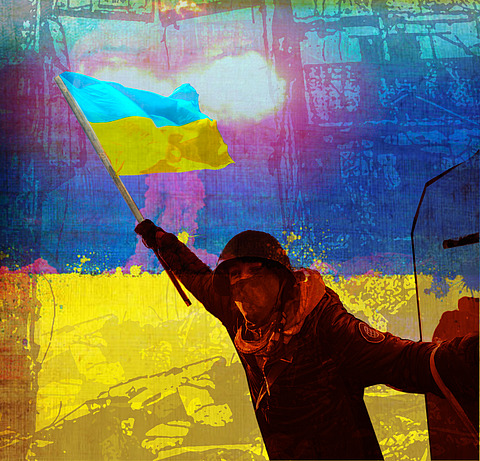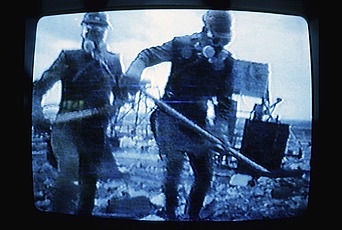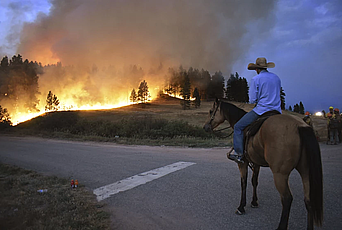Ukrainian Defiance: Snapshots of Experience

Russia’s unprovoked invasion of Ukraine is a humanitarian crisis of epic proportions. It has created a refugee crisis, the scale of which has not been seen since World War II in Europe. The toll of civilian casualties is in the thousands, with countless others missing, injured, trapped, or lacking in essential medicines, food, and water. As the war continues, the Ukrainian military and ordinary citizens have taken up arms to defend their sovereignty against a massive invading army. In an unbounded catalog of resistance, civilians have blocked military vehicles with their own bodies. Advancements on critical infrastructure, such as nuclear power plants, have been met with barricades. They have flooded their own villages to slow Russian attacks. In a now-famous act that became a national rallying cry, thirteen border guards on Snake Island near Crimea refused to surrender to a Russian warship, telling it ‘Go f— yourself’,1 before they were fired upon by the notorious Moskva (now sunk). Ukrainians have seemingly forgotten the feeling of fear. What makes their resolve so stiff? Part of the answer lies in a past in which they repeatedly signed their own death warrant. The other lies in a future in which they refuse to do so again.
An Unsettled Past
Just five years before declaring independence, in 1991, the country faced a different kind of fight for its life. On April 26, 1986, the Chernobyl nuclear power plant exploded and the massive fire that followed sent fallout across Belarus, Ukraine, Russia, and Europe. Chernobyl is considered to be the worst nuclear accident of all time. Most costly to Ukraine was the process of radiological containment. Initially, robots were deployed to remove radioactive debris from the roof of the plant’s third reactor, which stood next to the destroyed reactor. But radiation levels were so high that the electronics powering the robotic equipment failed. A month later, young men were conscripted to complete the job. With their bodies covered by primitive lead suits, rubber gloves, and cloth face masks, they shoveled highly radioactive debris into the mouth of the destroyed reactor in one-minute stints —enough time for them to absorb a lifetime’s worth of radiation exposure— and the one-minute rule was not evenly enforced. They called themselves “bio-robots.” In fact, their lives were expendable. As one member of a crew put it, biological resources “to be used and thrown out.”
More than 600,000 soldiers, firefighters, and other workers from across the Soviet Union were sent to the disaster site to clean up or contain the radiation —some people removed smoldering chunks of radioactive nuclear core near the ruined reactor unit with no more equipment than shovels and buckets—before a structure designed to safely hold the fourth reactor unit’s highly radioactive remains for a century was completed in 2019. In an interview I conducted a year after independence, a man on a two-week break from clean-up work lifted his pant leg and showed me a patch of skin that had puckered up to form a strange ring above his ankle. “This is from radiation,” he told me. He counted himself among the “living dead”: “Our memory is gone. You forget everything—we walk like corpses.” The Chernobyl Exclusion Zone, where people cannot live and scientists can stay for only short amounts of time, extends 1,000 square miles around the reactor site. I went on to interview scores of sick cleanup workers and resettlers in the 1990s for my book Life Exposed: Biological Citizens After Chernobyl,2 and learned how the memory of the explosion and the fight against radiation that followed is carved into Ukraine, and how it would inspire a dedicated defense of a free country.
The tragedy of Chernobyl is only one in a succession of historical shocks. Before Chernobyl, the Terror-Famine of 1932 and 1933—the outcome of a Soviet policy of deliberate starvation under Joseph Stalin—killed nearly 4 million Ukrainians.3 While official Soviet history and the foreign press corps4 helped silence the fact that this catastrophe ever took place, its reality was never lost on Ukrainians for whom it became part of the chilling ancestries in the so-called bloodlands.5 Here, I recall an encounter in 1992 with an elderly man in a southwestern Ukrainian town, where a massacre of civilians in the late 1930s had taken place. He described how, in the late 1980s, history students were ordered to shovel skeletal remains into the crypt of a baroque-styled Dominican-church-turned-storage-facility for agricultural supplies. The students used their hands to disturb the corpses—to erase history was the history lesson.
And by the 1990s, the Soviet industrial framework was falling apart. Hyperinflation wiped out household financial savings. A Chernobyl health crisis unfolded as people with cancers, heart and autoimmune problems, and other disorders poured into clinics. Its impacts on citizens, from the widows of deceased cleanup workers to those who continued working in the zone, overwhelmed the unprepared health system in which I conducted fieldwork. After telling one man that he couldn’t help him, a doctor turned to me and commented: “He’s on the border with death. We have many like that.” They were looking for relief from ills that they claimed were related to Chernobyl, but such connections were dismissed by international scientific experts and their Soviet counterparts because the patients had little to no documentation of their exposure. They were faced with an impossible burden of proof, even as the devastating public-health consequences of the disaster were downplayed.
Meanwhile, throughout that decade, the West rested in the conviction that it had ‘won’ the Cold War. Ukraine was once home to the third-largest nuclear arsenal in the world, thanks to the Soviet legacy. In 1994, it gave up its arsenal, comprised of some 1,900 strategic nuclear warheads, in exchange for diplomatic recognition, economic support, and security assurances from the United States, Britain, and Russia. As part of a denuclearization deal, Ukrainian military officers blew up intercontinental ballistic missile silos, located in the outskirts of strategic towns. Specialists dismantled nuclear bombers and soldiers demolished cruise missiles with circular saws.6 The nuclear materials were shipped to Russia,which promised “to respect the independence and sovereignty and the existing borders of Ukraine.” In that celebrated era of nuclear disarmament for which the U.S. took credit,7 Russia also promised “to refrain from the threat or use of force” against Ukraine. Whether the country had ceded its security by giving up those weapons is a subject of debate.8

In fact, Ukraine had enough problems to deal with, painful realities which juxtaposed such geo-political ‘triumphs.’ Health care workers were desperate to secure critical medical supplies. When then-U.S. Secretary of State Warren Christopher visited a children’s hospital in Kyiv, the hospital director set up an “exhibit” of babies affected by Chernobyl. My notes from conversations with staff about these babies are as follows, “One born prematurely, another survived the death of his twin; another born with a dysfunctional esophagus; […]. One born to a mother who, at age nine, was evacuated from the Chernobyl zone; her infant has half a lung. Another was born to a [clean-up] worker: there are six fingers on his left hand. He’s missing a trachea […]. His left ear is gnarled and deformed.” These were the children of the bio-robots, one doctor said to me. Such human challenges got lost when set against an international stage, another form of historical erasure against which Ukrainians struggled. Through these years, they were again and again made to face down their own demise, their efforts often unacknowledged or even denied as they settled for a bare survival. They refuse to settle again.
The Right to a Future
Today, amid the bombing of civilian targets, factories, schools, hospitals, theaters, museums, residential buildings, and nuclear power plants, this war puts many forms of weaponization on display—not just the conventional weapons of war, but ones linked to nuclear instability and Russian fossil fuel reliance that threaten both Europe and the world with multiple kinds of “dirty” power. Even so, in early March, the Kremlin forbade Russians from even calling it a “war.” It only allows talk of a “special military operation” as it continues to hide the toll of Russian casualties from the Russian public.9 The Nobel Peace Prize-winning journalist, Dmitry Muratov, suspended reporting on the war in his independent newspaper, Novaya Gazeta, as a result of censorship and the threat of criminal prosecution. He likened Putin’s domestic wartime disinformation campaign to a disastrous radiation release, telling The Observer, “Propaganda is like radiation. And it has touched many here.”10
The story of how historical erasure becomes its own act of aggression does not stop there. On the first day of its military assault on Ukraine, Putin’s army stirred up a painful memory of Soviet disregard when it overtook the Chernobyl nuclear facility. Whatever the reasoning was, the implication for Ukrainians was clear: the potential for a repeat of the disaster, which they had spent three long decades and considerable resources trying to prevent. Ukraine’s Ministry of Energy called the attack “one of the most appalling threats to Europe today.” It stated that “any provocation by the Chernobyl invaders…could turn into another world environmental catastrophe.” The “invaders” had subsequently held captive for weeks highly specialized staff who had been working at gun - point and without critical replacements as they tried to keep sensitive equipment running and radiation levels in check. Even radioactive waste wasn’t safe from the looting.11
The Zaporizhzhia nuclear plant, the largest nuclear power plant in Ukraine and Europe, was next in line to be attacked. On March 3, drone footage showed local residents attempting to block Russian troops from entering the plant. They had barricaded the main road to the facility with trucks, cars, tires and sandbags.12 They knew that any disaster there would dwarf the one at Chernobyl. That night, Russian troops shelled the plant, setting off a fire in one location.13 Indeed, Ukraine’s fifteen active nuclear power plants were not built to withstand a full military invasion. Some may survive aircraft crashes, but probably not missile or artillery attacks. An invading army, in control of these reactors, could increase the threat of nuclear terror.14 Tampering with these plants could be, in the words of one U.S. military analyst, like having “nuclearwar without bombs.”15 All this could create uninhabitable zones throughout Ukraine and force the country’s population back into dangerous decontamination work.
The children and grandchildren of the bio-robots in Ukraine know exactly how hard the war against invisible radiation was and how pivotal the war against authoritarianism is today. During the 2013–14 Revolution of Dignity, a turning point in the consolidation of a Ukrainian civic-based citizenship,16 Ukrainian women held torso-sized mirrors up to a wall of armed riot police. Thousands of protesters from all regions of the country occupied Kyiv’s Independence Square. They formed a half-mile-long barricade around it to safeguard a fragile democracy and its civic institutions. Holding their mirror-shields up to Soviet legacies of corruption and violent repression, the women, together with the protesters, overthrew an autocratic puppet who found refuge in Putin’s military dictatorship. “If Ukraine’s democracy survives, it will crush the arguments of tyrants who describe democracies as weak, incapable, chaotic,” writes journalist Nataliya Gumenyuk.17 In its mirror-shields, war is chaos. But it is also where so many live: on the front lines, where the right to a future must be defended.
This is an opinion and analysis article, and the views expressed by the author are not those of the Institute.
Adriana Petryna is Professor and Director of the MD-PhD program in Anthropology at the University of Pennsylvania. She is a former Member (2003–04) and Visitor (2006) in the School of Social Science and recent Guggenheim fellow. Her most recent book is Horizon Work: At the Edges of Knowledge in an Age of Runaway Climate Change with Princeton University Press (2022).
- Dan Lamothe and Paul Sonne, “On Ukraine’s Snake Island, a defiant last stand against Russian forces,” The Washington Post, February 25, 2022.
- Adriana Petryna, Life Exposed: Biological Citizens after Chernobyl (Princeton: Princeton University Press, 2013).
- Anne Applebaum, “How Stalin Hid Ukraine’s Famine from the World,” The Atlantic, October 13, 2017.
- Ibid.
- Timothy Snyder, Bloodlands: Europe Between Hitler and Stalin (NY: Basic Books, 2012).
- Kateryna Oliynyk, “The Destruction of Ukraine’s Nuclear Arsenal,” Radio Free Europe Radio Library, January 9, 2019.
- Douglas Jehl, “Clinton, Visiting Kiev, Celebrates Success,” The New York Times, May 12, 1995.
- William J. Bond, “Ukraine Gave Up a Giant Nuclear Arsenal 30 Years Ago. Today There Are Regrets,” The New York Times, February 5, 2022.
- Marsha Gessen, “How Putin Wants Russians to See the War in Ukraine,” The New Yorker, March 1, 2022.
- Andrew Roth, “‘Don’t call it a war’ – Propaganda filters the truth about Ukraine on Russian Media,” The Guardian, February 26, 2022.
- Richard Stone, “Dirty bomb ingredients go missing from Chornobyl monitoring lab,” Science, March 25, 2022.
- Sarah Cahlan, “Drone footage shows citizens blocking russian troops in Enerhodar, home to Zaporizhzhia nuclear plant,” The Washington Post, March 3, 2022.
- Geoff Brumfiel et al., “Video analysis reveals Russian attack on Ukrainian nuclear plant veered near disaster,” NPR, March 11, 2022.
- Linda Pentz Gunter, “As Russia Seizes Chernobyl Site, Ukraine’s 15 Nuclear Reactors Pose Unprecedented Risk in War Zone, Democracy Now!, February 25, 2022.
- Craig Hooper, “A Ukraine Invasion Could Go Nuclear: 15 Reactors Would Be In War Zone,” Forbes, December 28, 2021.
- Amelia Glaser, “Zelensky’s Ukraine is real. Putin’s doesn’t exist,” CNN, March 26, 2022.
- Nataliya Gumenyuk, “Ukrainians are fighting a people’s war — and everyone is involved, from top to bottom,” The Washington Post, March 7, 2022.


